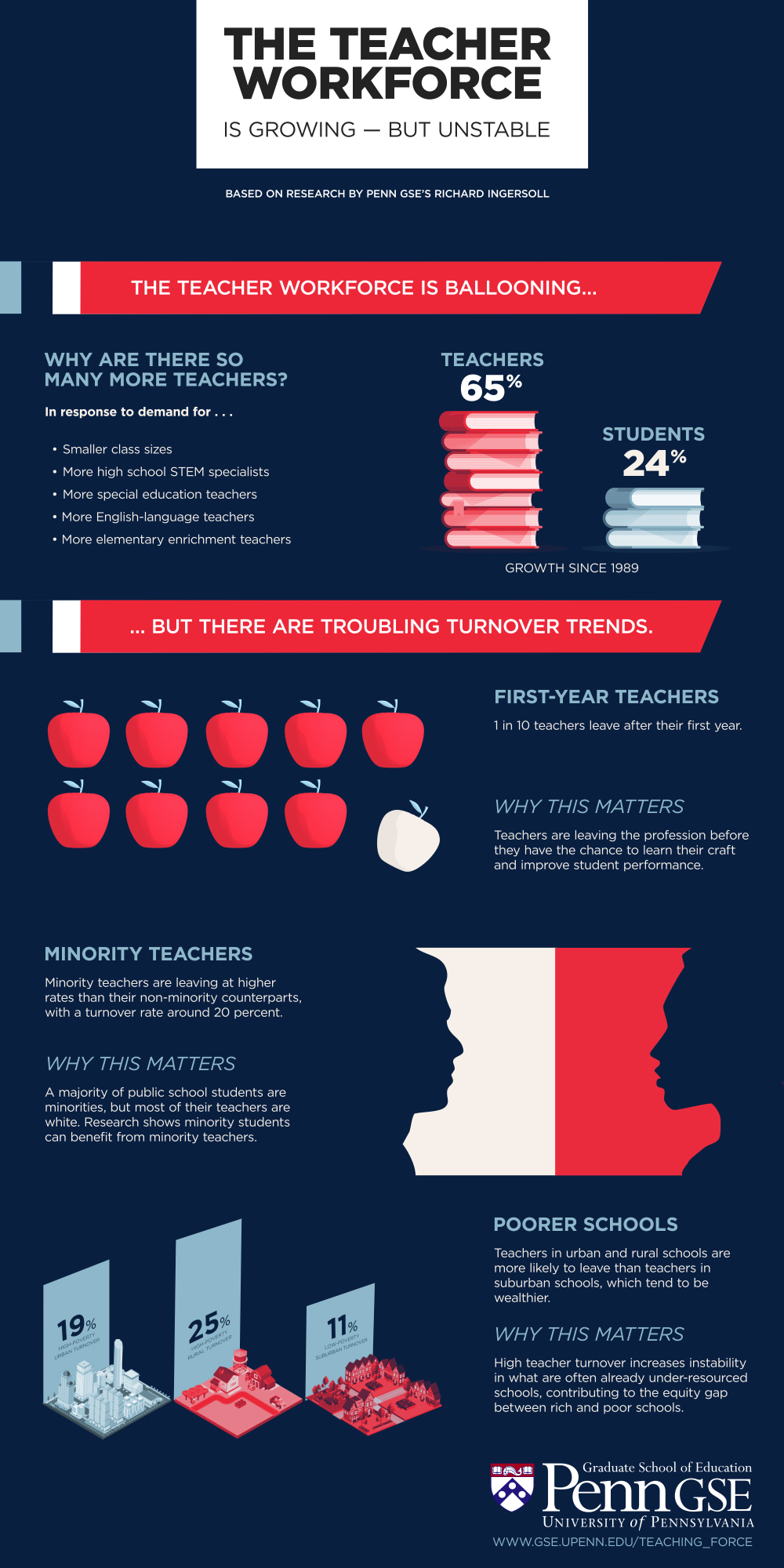The teacher workforce is transforming. Here’s what it means for schools and students.

America’s schools are hiring more teachers than ever but struggling to keep them in the classroom. More teachers working today have little experience. Despite a great increase in the hiring of minority teachers, the diversity of the teacher workforce still doesn’t reflect the diversity in the student population.
A new report from Penn GSE’s Richard Ingersoll explores what these and other trends over the last three decades mean for how teachers work, students learn, and schools operate.
“The teacher workforce has been transformed over the last 30 years, with significant financial, structural, and educational consequences,” Ingersoll said. “Too often researchers, school leaders, and policymakers are still operating under false assumptions about who goes into teaching and how teaching careers unfold. If we want to improve student performance, we must understand this new reality.”
Ingersoll’s key findings:
A LEAP IN NUMBERS — Between 1987-88 and 2015-16, the number of teachers in public, private, and charter schools increased by more than three times the rate of student enrollment increases. This increase is tied, in large part, to reforms that the public has demanded: smaller elementary school class sizes, more math and science teachers, more special education teachers, more enrichment teachers in elementary schools, more reading teachers, and more English as a Second Language (ESL) and bilingual teachers.
LEAVING IN HIGH NUMBERS — 44 percent of new teachers leave within five years.
A YOUNGER TEACHING FORCE — Public school teachers have gotten younger. In 2007-08, the modal or most common teacher was 55 years old. In 2015-16, the modal age ranged from mid-30s to mid-40s.
DECLINE IN EXPERIENCE — The modal teacher has one to three years of experience, a sharp decline from the 15 years of experience the modal teacher had in 1987-88.
FEWER MEN THAN EVER — Over 76 percent of public school teachers are women, high even for a profession that has been historically female dominated.
MINORITIES BEING CHURNED OUT — While there remains a parity gap (51 percent of public school students are minorities, and only 19.9 percent of their teachers are), there has been a dramatic surge in minority teacher hires. But these same teachers are among the most likely to leave the profession.
INSTABILITY CONCENTRATED — About half of all teacher turnover takes place in 25 percent of public schools. High-poverty, high-minority, urban, and rural public schools have among the highest rates of turnover.

